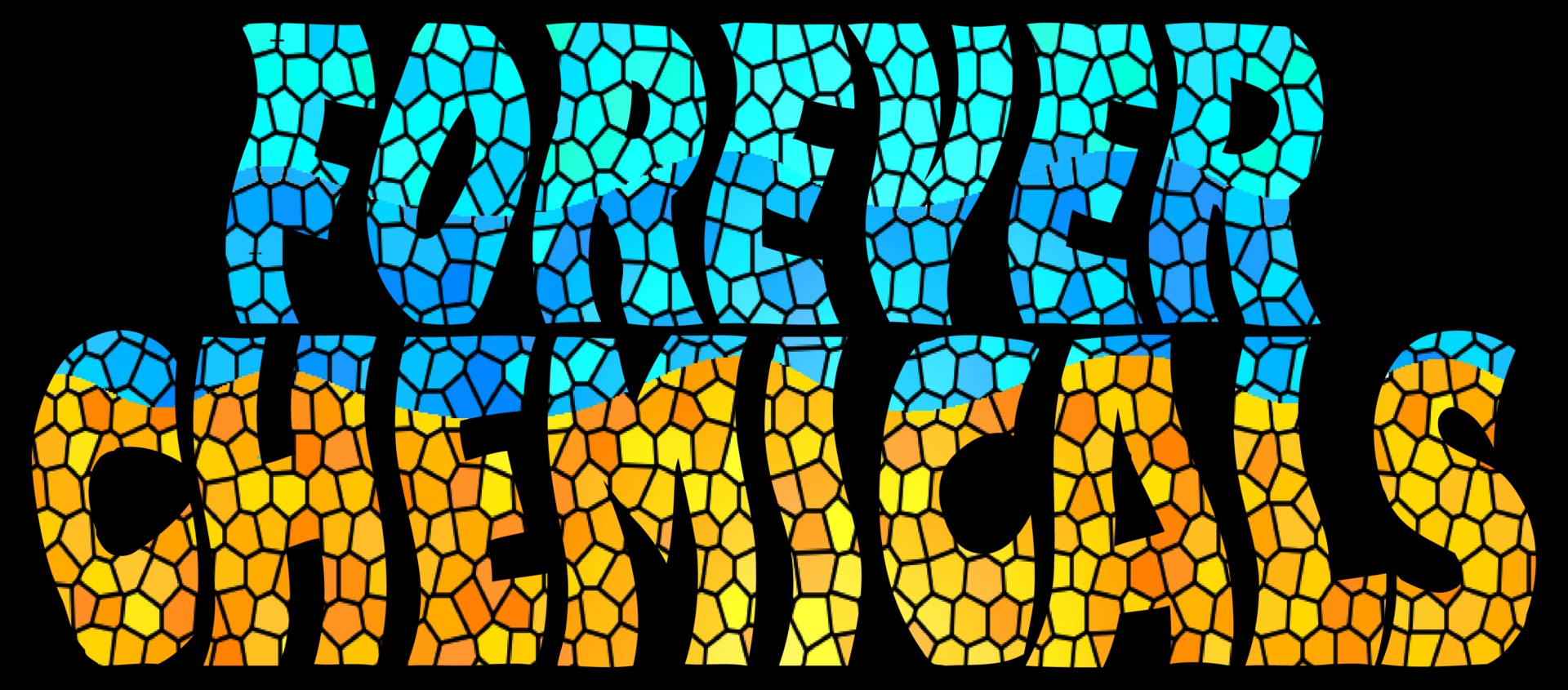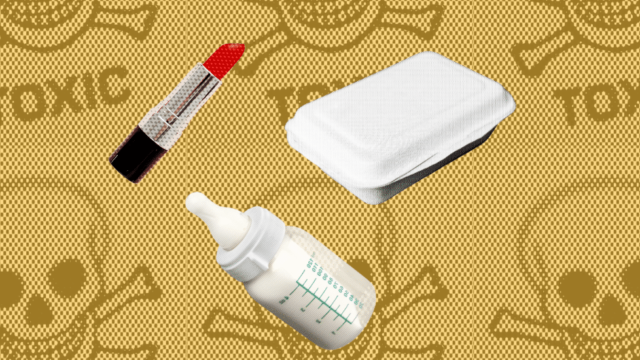Raise your hand if you’ve ever burned eggs onto the bottom of your frying pan. In the 1940s, DuPont introduced the world to Teflon, a non-stick coating that revolutionized cookware for millions. Teflon’s convenience was unquestionable. It wasn’t until decades later that we’d come to learn about the damage it was doing to our health and the environment. Research has linked exposure to the chemicals used to manufacture Teflon to many health conditions, including certain cancers, reproductive issues, and high cholesterol. To make matters worse, it’s also been uncovered that PFAS manufacturers, including Dupont and 3M, were aware these substances were toxic as early as the 1970s, but intentionally obscured the danger. [1]
Teflon is part of a human-made class of chemicals called per- and polyfluoroalkyl substances (or PFAS for short). PFAS is an umbrella term covering about 12,000 chemicals. PFAS chemicals contain one of the strongest chemical bonds in organic chemistry – carbon-fluorine. This has earned them the nickname “forever chemicals” for their resistance to degradation.
PFAS chemicals are accumulating in our bodies and the environment. Because they don’t break down, concentration of these chemicals intensifies the more we use them. As scientists sound the alarm about the health and environmental risks of PFAS chemicals, the clock is racing to end our use of them.
What are forever chemicals used for?
PFAS chemicals are impossible to avoid. They are water-, stain-, and grease-resistant. This makes them popular in both industrial and consumer goods. They are in our homes, our offices, our supermarkets — even in our bodies. PFAS chemicals are ubiquitous in many industrial processes and products. They’re used in products ranging from firefighting foam to cosmetics, and food packaging to textiles like carpet and clothing. [2]
People are exposed to PFAS chemicals every time they use these products. These risks are compounded when these products are disposed of and broken down. PFAS chemicals are easily transported through air and water. This means they can travel long distances, contaminating food, water, air, and dust. Pollution from PFAS chemicals reaches areas as remote as Antarctica. [3]
So, what do PFAS chemicals do to our bodies?
More than 99 per cent of people tested in Canadian have PFAS chemicals in their blood. [4] As their nickname suggests, forever chemicals are readily absorbed and slow to be eliminated. They can persist in the bodies of humans and wildlife for many years. They can build up over time, targeting multiple organs. Exposure to PFAS chemicals causes many negative health impacts. They decrease fertility and can cause developmental delays in children. PFAS exposure can suppress the immune system and increase the risk of some cancers. [5] Pregnant people can also pass these substances to infants through breast milk. Transfer is also possible in utero through the placenta.
Who is most at risk from forever chemicals?
While forever chemicals impact us all, marginalized communities carry a disproportionate burden. Some PFAS chemicals are higher in Indigenous populations. PFAS chemicals biomagnify in the Arctic wildlife and staple foods in traditional Inuit diets. [6] This places pregnant Inuit at increased risk compared to pregnant people in the general population.
Studies have also found that firefighters have higher levels than the general population. PFAS-containing firefighting foams and protective gear cause chronic and prolonged exposure. [7]
Are PFAS banned in Canada?
The regulation of PFAS in Canada is in its infancy. Environment Canada previously recognized small specific subsets of PFAS as “toxic” under the Canadian Environmental Protection Act. Yet these prohibitions came with several exemptions attached. PFAS chemicals can still be used in manufactured items, which are Canada’s primary source of PFAS substances. The vast majority of PFAS substances remain completely unregulated in Canada. [8]
In May 2023, the government inched closer to ending the proliferation of PFAS in Canada. Environment Canada released a damning risk assessment of PFAS. The draft report concluded that PFAS chemicals carry significant health risks to humans. [9] Most scientific studies to date have focused on a small number of PFAS chemicals. The report found that risks identified for well-studied individual PFAS chemicals are broadly applicable across the class. This magnifies concerns about cumulative effects from the co-exposure to so many PFAS chemicals.
Environment and Climate Change Canada and Health Canada have proposed listing a broad class of PFAS as toxic substances under CEPA.
Canada needs to keep pace with other jurisdictions
In a submission responding to the report, Ecojustice urged Canada to move quickly on the report’s findings. We strongly support designating the PFAS class of chemicals as toxic under CEPA. This critical first step will lay the groundwork for further regulatory measures. Ecojustice also recommended a complete ban on PFAS chemicals. Exceptions should only be permitted for uses recognized as essential. The ultimate goal is to completely phase those out over time.
This recommendation mirrors the proposal of the European Union. [10The EU is exploring a ban on PFAS with a few specific and time-limited exceptions. If the European Commission adopts the proposal, companies will have to find alternatives for approximately 10,000 PFAS in products and applications currently in use.
Many US States have already implemented bans on PFAS in consumer products. [11] Maine forced the phase-out of PFAS in rugs, carpets, and fabric treatments; all non-essential uses will be phased out by 2030. Vermont banned PFAS in carpets, rugs, and ski wax, and a food package ban will come into force next year. New York banned PFAS from paper-based plates, cups, bowls and other food packaging. California has a related ban on PFAS in food packaging and children’s products; a ban on PFAS in cosmetics will come into force in 2025.
Moving towards a future free of more PFAS
While a future fully free from PFAS may not be possible thanks to existing pollution, Canada must act urgently to prevent further pollution. Following the recent public consultation, we expect Canada to follow through on recommendations in their report. After the CEPA listing, further consultation is needed to inform robust regulatory measures.
PFAS chemicals cause harm to our bodies and the environment on a massive scale. Higher exposures through traditional foods mean Indigenous communities face increased risk. Other jurisdictions have set a strong precedent by banning uses in consumer products. The science on PFAS chemicals is clear. There is no justification to further delay action — nor can Canada afford more delay.
References
[2] What are PFAS? — Agency for Toxic Substances and Disease Registry
[3] Bioaccumulation of Per and Polyfluoroalkyl Substances in Antarctic Breeding South Polar Skuas (Catharacta maccormicki) and Their Prey — Frontiers
[4] Fifth Report on Human Biomonitoring of Environmental Chemicals in Canada — Government of Canada
[5] Emerging chemical risks in Europe — ‘PFAS’ — European Environment Agency
[6] Toxic contaminants detected in northerners at levels twice as high among general population — The Narwhal
[7] PFAS in the modern fire service — Firefighting in Canada
[8] Canada Catching Up on Regulation of PFAS Substances — McMillan
[9] Draft state of per- and polyfluoroalkyl substances (PFAS) report — Government of Canada
[10] Submitted restrictions under consideration — European Chemicals Agency
[11] PFAS Bans, Restrictions Go Into Effect in States in 2023 — Bloomberg Law





